Taking a holistic approach
Farm Facts
Farmer: Margie Fitzpatrick
Location: Goulburn, NSW
Property size: 1500 hectares
Enterprises: Self replacing Merino flock, Angus cattle
Annual rainfall: 650 millimetres
Taking a holistic approach to managing her Goulburn farm has helped Margie Fitzpatrick to focus on creating a sustainable, productive future for her family. Several of Margie’s holistic goals for her farm include 100 per cent ground cover with diverse desirable grasses, numerous trees and shrubs creating shelter for stock, wildlife and pasture and accessible infrastructure for optimum grazing impact.
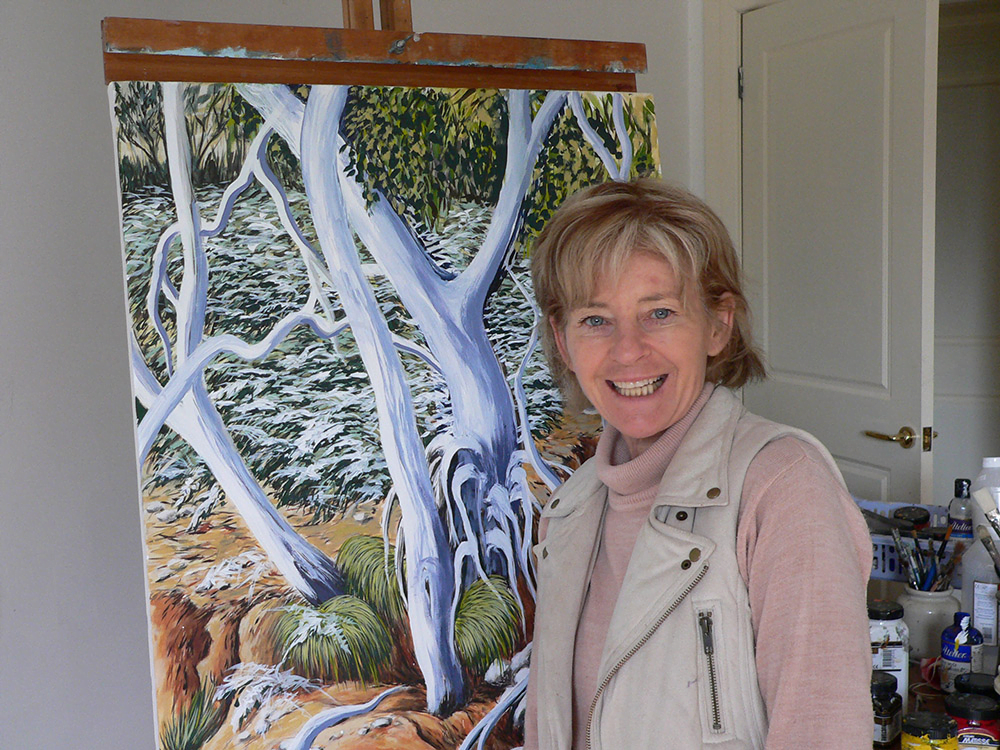
Goulburn farmer Margie Fitzpatrick’s holistic vision for her property Australind, includes healthy waterways, dams and creeks and she is well on the way to achieving these goals through her involvement in the new Rivers of Carbon project.
“I would like the land to absorb and retain water and nutrients for solar, mineral and water cycles to be effective in achieving my goals,” she said.
Another key component of Margie’s vision is healthy dams, creeks and waterways and her involvement in the new Rivers of Carbon initiative, along with previous work through Greening Australia and the Lachlan Catchment Management Authority (CMA), means she is well on the way to achieving positive outcomes for water quality, biodiversity, production benefits and carbon sequestration.
“When I was 17, I remember walking with my mum through the landscape particularly on the river and riparian areas and noticing how damaged the soil had become and I thought how am I going to repair the damage to this landscape?” she said.
“When I was finally in a position to act on my ideas I sourced any available funding and support from the groups ready to help people like me as I knew I couldn’t do it alone.”
“My vision is to see a vibrant and healthy landscape with diverse flora, fauna, soil microbiology and waterways. It is a lot to aim for, I know, and it will take time, “Margie said.
“Australind is situated at one of the highest points of the Lachlan catchment so runoff begins here. I feel an incredible responsibility to act with thought and care and I am honoured to be part of a community dynamic aiming to restore health to the land.”
Pioneering family
Margie’s family settled the property, called Australind, in 1860. The farm is 1500 hectares, running a self-replacing flock of 3,000 Merino ewes and 30 head of Angus cattle. The annual rainfall is 650 millimetres. Margie grew up in Goulburn, but her mother Dorothy acquired the farm in the late 1970’s but by then Margie was pursuing a career as an artist. In 1988 she married a school teacher Michael Lipscomb and they made their home at South Hill, a 32ha property just outside Goulburn, raising two children, Andrew now 22 and Emma, now 18.
“At that stage my mother was still running Australind but taught Michael how to run Merinos. From there he developed such an interest in farming he eventually took over the running of Australind after my mother passed away from cancer,” Margie said.
“For the next 13 years he drove out to the farm every day but due to the droughts of the 90’s and early 2000’s we decided to sell South Hill and make the move to Australind.”
Sadly, Michael passed away from cancer nine months after the move but Margie made the decision to stay on the farm and create a home and lifestyle for her and her children.
Holistic vision
Margie started studying holistic management about three years ago and is now putting it into practice on her farm. According to Margie, Holistic Management is a decision-making process which is based on three factors; people, finances and ecology. These factors need to be weighed up with every on-farm decision and tested against the context of your holistic goals.
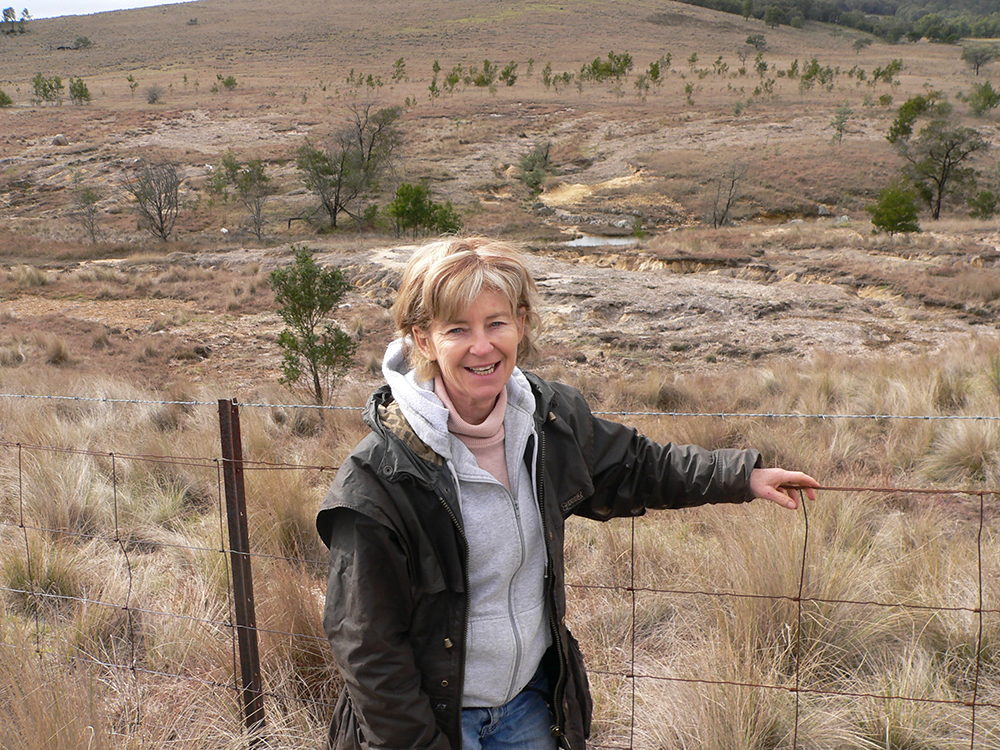
“Changing management practices is to me about getting people on board who are supportive of change. This has been a challenge for me but having done Holistic Management with the late George Gundry and Paul Griffiths, I am finding that going through a process of learning with other people has helped me enormously,” she said.
Margie now runs Australind with her farm manager, Allan Crain from WaggaWagga, NSW.
“I think holistic management resonates with women’s natural thinking, however the process of creating a grazing chart was, at the start, quite challenging,” admits Margie.
But I can now see the practicalities of knowing how much fodder you have at the beginning of a season. This helps you to budget stocking rates, finances and grass, it also helps to minimise pasture damage as well as enabling you to better manage a drought,” she said.
“I have always been interested in ecology rather than animals but the Holistic Management course shifted my thinking to realising the animals are not only grown for production but are a key component to restoring harmony to the land by stimulating biology through the impact of timed herd grazing.”
Margie and Allan will implement a time management grazing plan after lambing in September running animals in larger mobs for shorter periods of time across the farm.
Margie is also a practicing artist inspired by the natural environment around her. She has exhibited her paintings widely and for 13 years was the designer for the Southern District exhibit at the Sydney Royal Easter Show.
“Art is a form of expression for me to help create my vision into reality. The land inspires me and in turn the paintings reflect back to me what I want to see.”
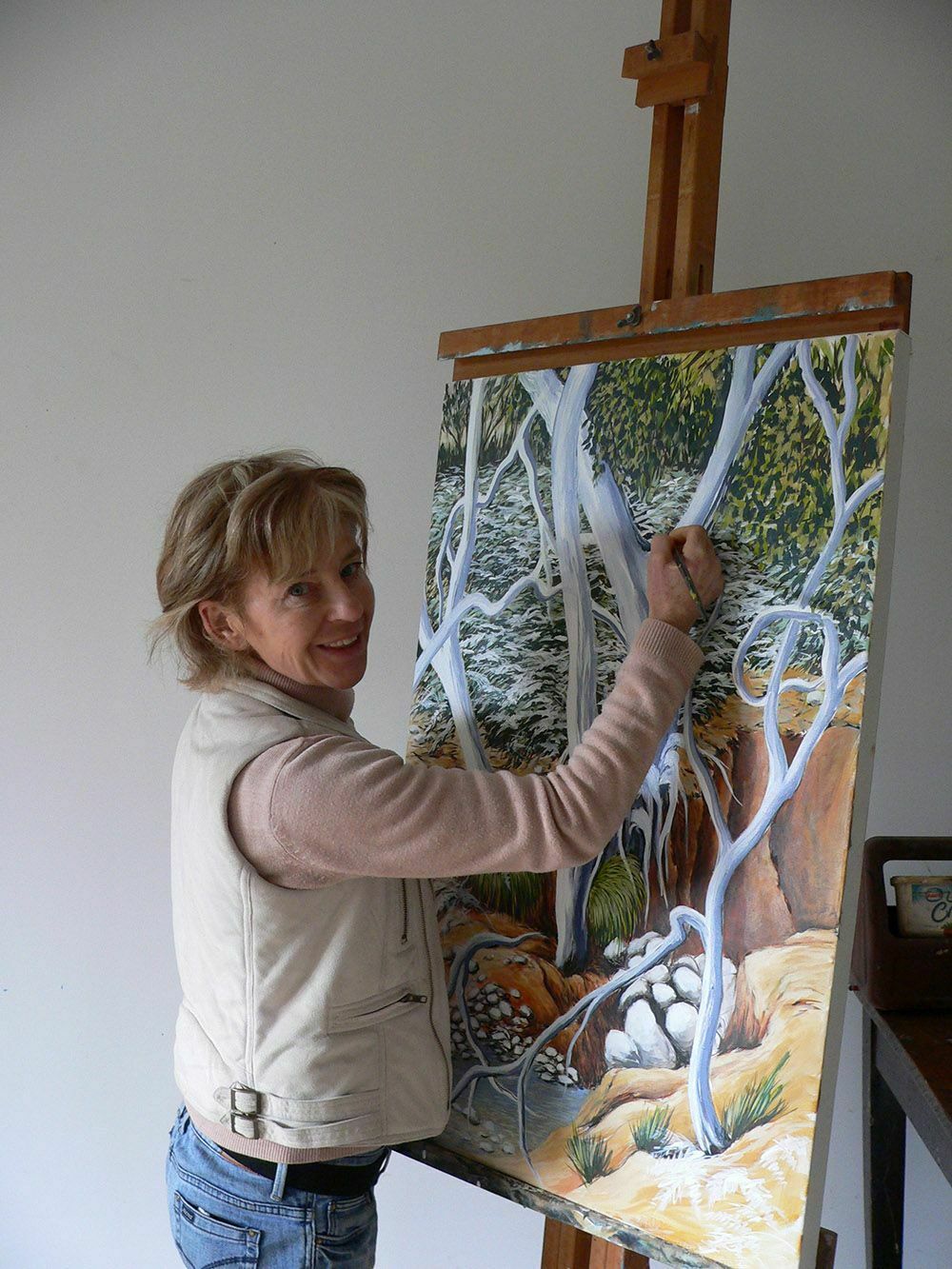
Margie’s art is inspired by the land around her.
Riparian Rehabilitation
Margie started rehabilitating a creek on Australind during 2007 with funding from the Lachlan CMA and Greening Australia. The creek, known as Nanny’s Creek, was fenced off incorporating a wide riparian area and revegetated with a mix of native species endemic to the region.
“There were a lot of eroded and scalded areas so we tackled the problem by spreading 346 round bales of pasture hay and straw over two large sites. This was very successful with ground cover of plant material taking hold but it very labour intensive and expensive,” Margie said.
Margie received a grant as part of the Rivers of Carbon project to link areas of native vegetation with previously rehabilitated sites to form intact riparian corridors and stabilise eroding gullies. The work will focus on fencing off 48ha of very eroded and degraded areas on a steep seepage site which incorporates patches of native remnant vegetation and several underground springs. The steep slope and lack of vegetation has caused serious erosion damage over the years.
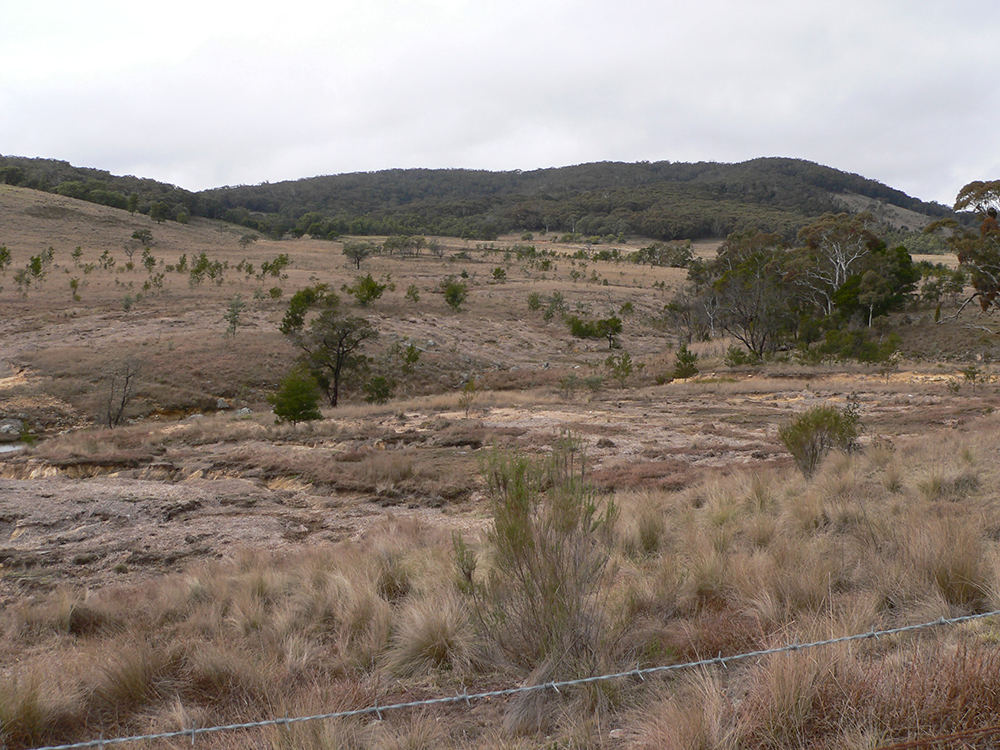
With funding from Greening Australian and the Lachlan Catchment Management Authority, Margie fenced off this riparian area during 2007 and spread hay bales on the eroded areas during 2012 to act as a mulch and encourage the establishment of some ground cover.
About two kilometres has been fenced off using six lines of plain wire with one line of barb wire on the top. An alternate water supply is being constructed by placing a tank on the nearby hill, a solar batter operated pump will deliver water to the tank which will then gravity feed to troughs installed in the two areas this project has created.
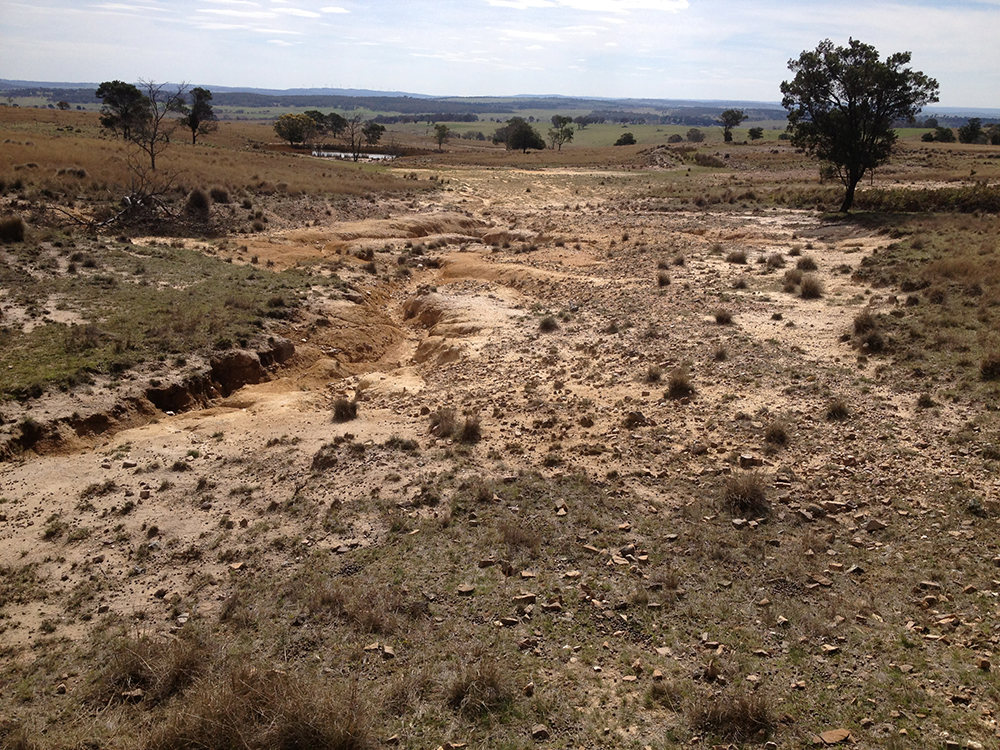
The Rivers of Carbon project is located on a steep seepage site which is severely eroded. It has been fenced off and will be revegetated with native tree and shrub species endemic to the region.
“This will allow us to make further use of this mobile water to create even smaller areas for more intensive grazing in the future,” Margie said.
Margie Fitzpatrick, not only a great land manager but a wonderful artist as well.
A mix of native species, both trees and shrubs, endemic to the area will be direct seeded throughout the riparian area in Spring 2013. Some of the main species include River Red Gum (Eucalyptus camaldulensis), Yellow box (E. melliodora), Blakely’s Red Gum (E. blakelyi), Red Stringybark (E. macrorhyncha), Silver Wattle (Acacia dealbata), Lightwood (Acacia implexa), Black Wattle (Acacia mearnsii), Prickly Tea Tree (Leptospermum continentale) and Purple Coral Pea (HardenbergiaViolacea).
In the future Margie plans to graze the riparian areas for short times, allowing animal impact to stimulate biology which will enhance the recovery of the ground cover, but the trees will need to establish themselves first.
Margie is focused on improving the grazing management and ensuring there is sufficient competition from the perennials and more desirable plants to thrive outcompeting the weeds. Australind comprises a mix of native grasses such as Microlaeana, Danthonia, Kangaroo Grass, Poa and Stipa grasses and introduced pasture species such as Cocksfoot, Phalaris and various Clovers.
Margie is looking forward to monitoring the progress in the riparian areas and watching the land recover. As the waterways start to reed up, plenty of frogs are already making their home at Australind, and she is hoping to see increased biodiversity in the riparian areas. There is also a large variety of bird species found on the farm, including the rare Superb Parrot whose survival Margie hopes will be assured with the protection of their habitat and creation of native vegetation corridors.
“Carbon credits have played a major role in my thinking, but it has come indirectly as a part of a process and awakening of what this whole idea of sequestering carbon means, I can see the benefits of encouraging farmers to keep going and be committed to change as it will make a huge difference in our atmosphere if we can all do our bit to get the carbon back into the ground,” Margie said.
“The other main drivers for doing this is about creating wealth for the land, if you have this, you have biodiversity in wildlife, birdlife and plant life and for people as well it is a win-win scenario,” she said.
“Living a quality life now while working on leaving Australind a better place for my children and their children’s future is what I aim for.”
Margie believes carbon farming and gaining carbon credits in the future may be a way of further supporting farmers and their intellectual knowledge and experience in repairing and producing from the land.
Ongoing monitoring of the project site will be carried out by Greening Australia using the Rapid Assessment of Riparian Condition tool and photo points. Margie will be responsible for maintenance of fences, removal of tubestock guards, weed control and stock management.
Follow the progress of the farmers involved in the Rivers of Carbon project through regular updates on the project’s website – www.riversofcarbon.org.au.
 This story was written by Kylie Nicholls (right) in collaboration with the farmers.
This story was written by Kylie Nicholls (right) in collaboration with the farmers.
You can download a PDF copy here.
FURTHER INFORMATION
Margie Fitzpatrick – margiefitz1@gmail.com
Rivers of Carbon Project Managers
Siwan Lovett – siwan.lovett@arrc.com.au
Lori Gould – lori.gould@arrc.com.au